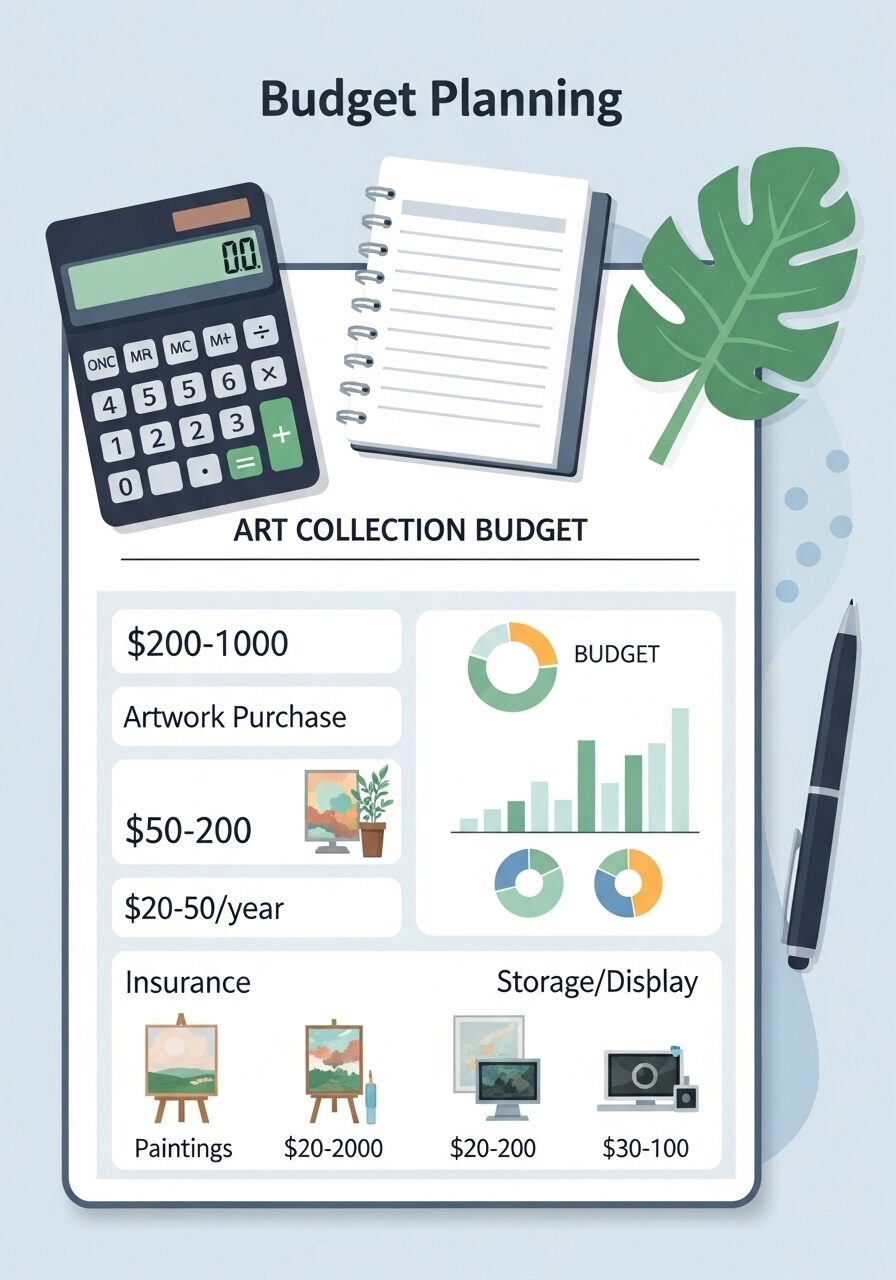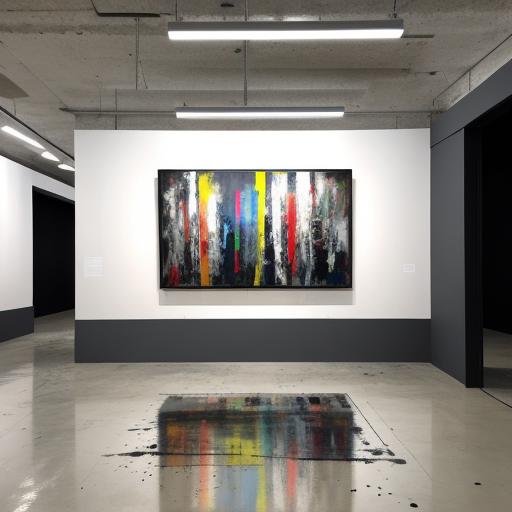Want to start collecting art but think it’s too expensive? You’re not alone! Many people believe that buying art on a budget is impossible, but that’s simply not true. Art galleries offer incredible opportunities for budget-conscious collectors who know where to look and when to buy. Whether you’re a student, young professional, or anyone wanting to build an art collection without breaking the bank, this guide will show you proven strategies for finding affordable original art at galleries.
Key Points Summary
- Gallery timing and relationships are crucial for finding deals
- Different gallery types offer varying price points and opportunities
- Budget planning beyond purchase price is essential
- Negotiation and payment plans are often available
- Building collections gradually leads to better long-term results
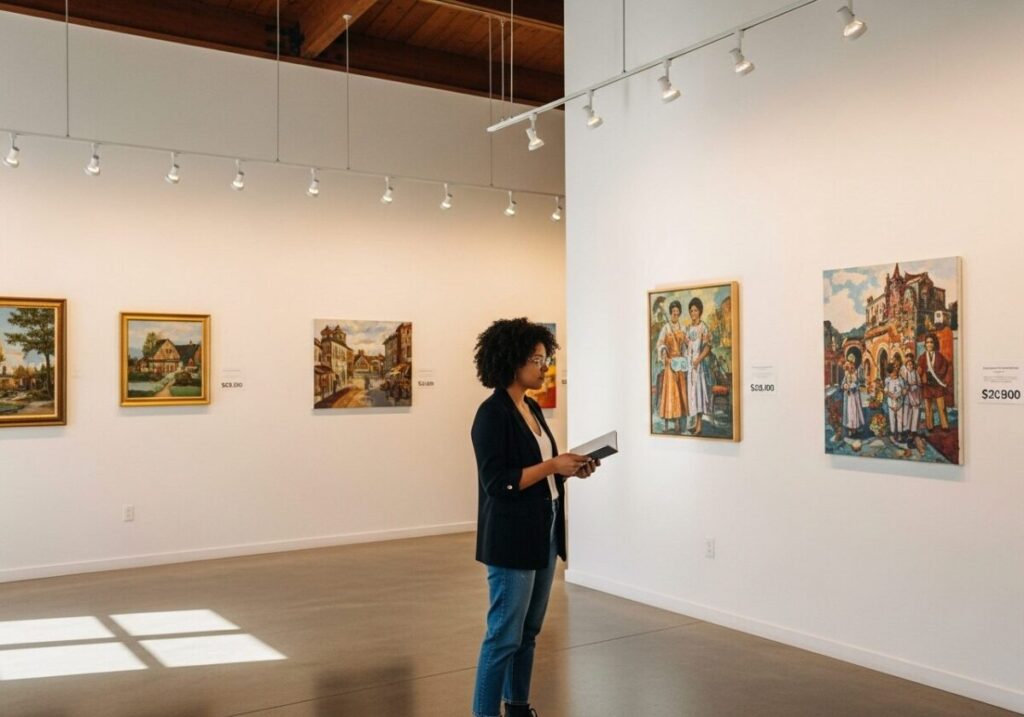
Understanding Art Gallery Pricing
Before diving into budget strategies, it’s important to understand how galleries price their artwork and discover the best art galleries in the world. Unlike retail stores with fixed prices, art galleries often have flexibility in their pricing structure. What Makes Paintings Valuable plays a major role in gallery pricing, but there’s more to the story.
Galleries typically mark up artwork by 40-60% from what they pay artists. This markup covers gallery expenses like rent, staff, marketing, and exhibition costs. However, this doesn’t mean prices are set in stone. Many galleries are willing to negotiate, especially for:
- End-of-exhibition sales
- Multiple piece purchases
- Repeat customers
- Cash payments
- Younger or emerging artists’ work
Understanding these pricing factors gives you power as a budget-conscious buyer. When you know how the system works, you can find opportunities to get quality art at lower prices.
Best Types of Galleries for Budget Buyers
Not all galleries are created equal when it comes to affordable art. Here’s where budget-conscious collectors should focus their attention:
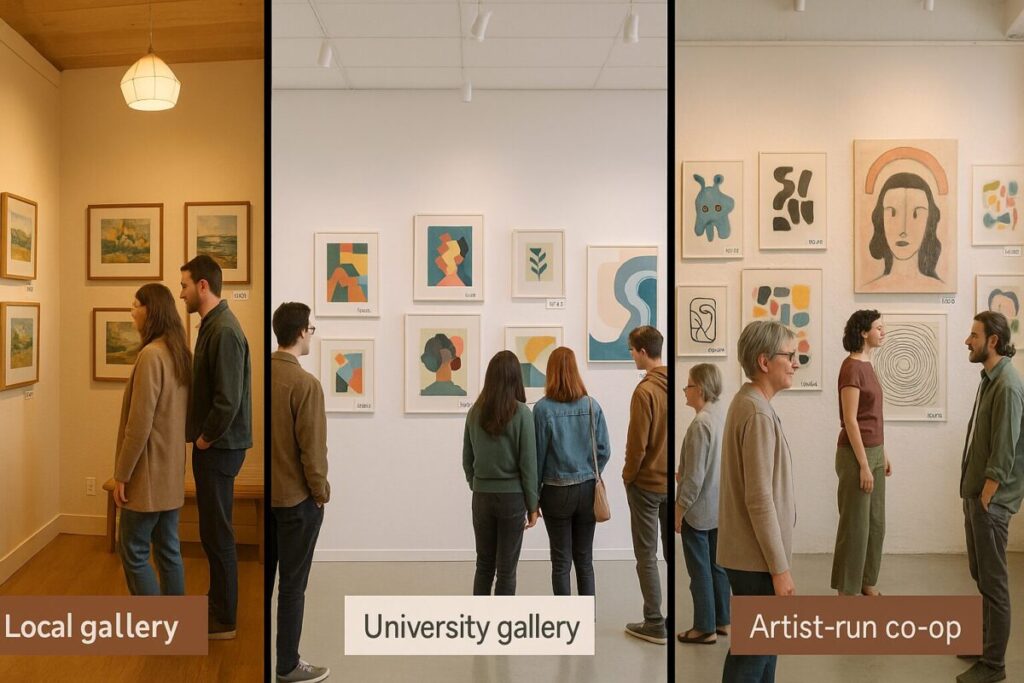
Local and Community Galleries
These galleries often feature regional artists with lower overhead costs. They’re perfect for finding unique pieces that won’t break your budget. Community galleries frequently host group shows where you can discover multiple affordable artists in one visit.
University Galleries
College and university galleries are goldmines for budget art collecting. They showcase student work, faculty exhibitions, and emerging artists at very reasonable prices. Many pieces range from $100-$800, making them perfect for new collectors.
Artist-Run Cooperatives
These spaces are owned and operated by artists themselves, cutting out middleman costs. You’ll find experimental, cutting-edge work at prices that reflect the artists’ need to sell rather than gallery profit margins.
Pop-Up Galleries and Art Fairs
Temporary exhibitions often feature discounted prices since organizers want to move inventory quickly. Keep an eye on local art fair schedules and pop-up announcements in your area.
Strategic Timing for Art Purchases
When you buy matters just as much as where you buy. Understanding Art Market Trends 2024 can help you time your purchases perfectly.
“The best time to buy art is when galleries need to move inventory, not when they’re flush with opening night excitement.”
End-of-Exhibition Sales
Many galleries offer discounts during the final weeks of an exhibition. Artists and galleries prefer selling pieces rather than storing them, creating opportunities for savvy buyers.
Seasonal Patterns
- January-March: Post-holiday sales and inventory clearing
- Summer months: Slower gallery traffic means better negotiation opportunities
- November-December: Year-end clearing before new exhibitions
Opening Receptions vs. Later Visits
While opening receptions are exciting, prices are typically firm. Return during the exhibition’s run when staff have more time to discuss pricing and payment options.
Building Relationships with Gallery Staff
This strategy can’t be overstated. Gallery staff are your allies in finding affordable original art. Here’s how to build these crucial relationships:
Be Genuine and Respectful
Gallery staff can spot fake interest from miles away. Show genuine curiosity about the artists and their work. Ask thoughtful questions about techniques, inspiration, and the artist’s background.
Visit Regularly
Becoming a familiar face pays dividends. Regular visitors often get early access to new exhibitions, insider information about upcoming sales, and first notification of price reductions.
Follow Up After Purchases
Send a photo of how you’ve displayed your purchase. This simple gesture builds goodwill and keeps you top-of-mind for future opportunities.
Negotiating Art Prices at Galleries
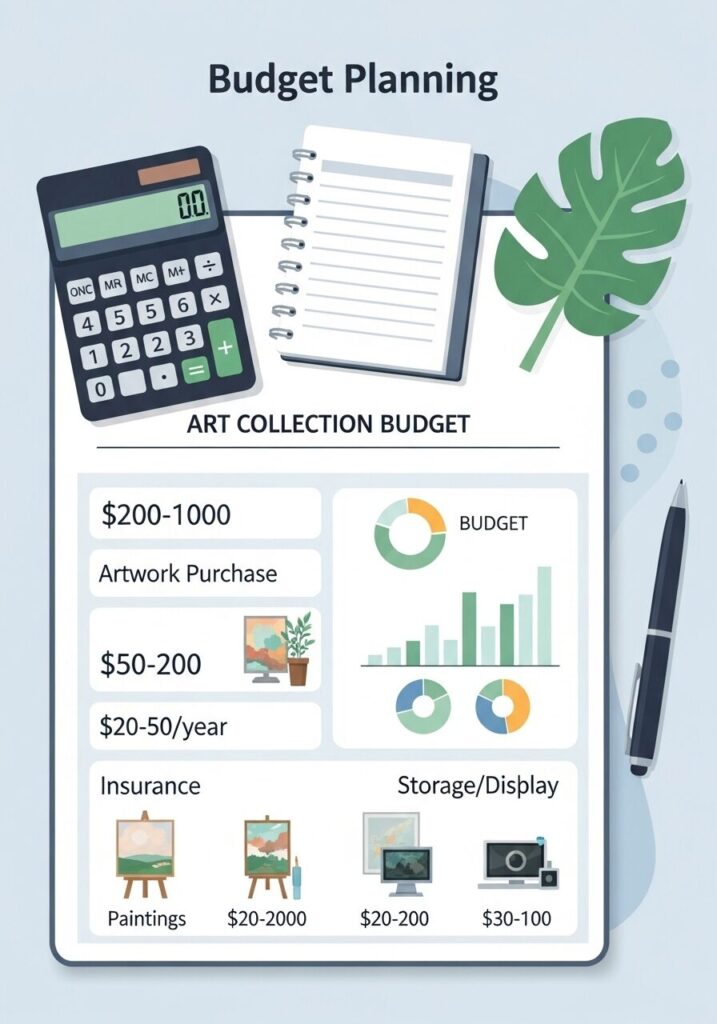
Many people feel uncomfortable negotiating art prices, but it’s a normal part of the gallery experience. Here are proven negotiation strategies:
Research First
Before negotiating, research comparable works by the same artist or similar artists. Knowledge is power in negotiations.
Start with Questions
Instead of demanding discounts, ask about:
- Payment plan options
- Multiple piece discounts
- Student or first-time buyer programs
- End-of-show pricing
Be Prepared to Walk Away
This classic negotiation tactic works in galleries too. If you’re genuinely prepared to leave without purchasing, you have stronger negotiating position.
Consider Alternative Arrangements
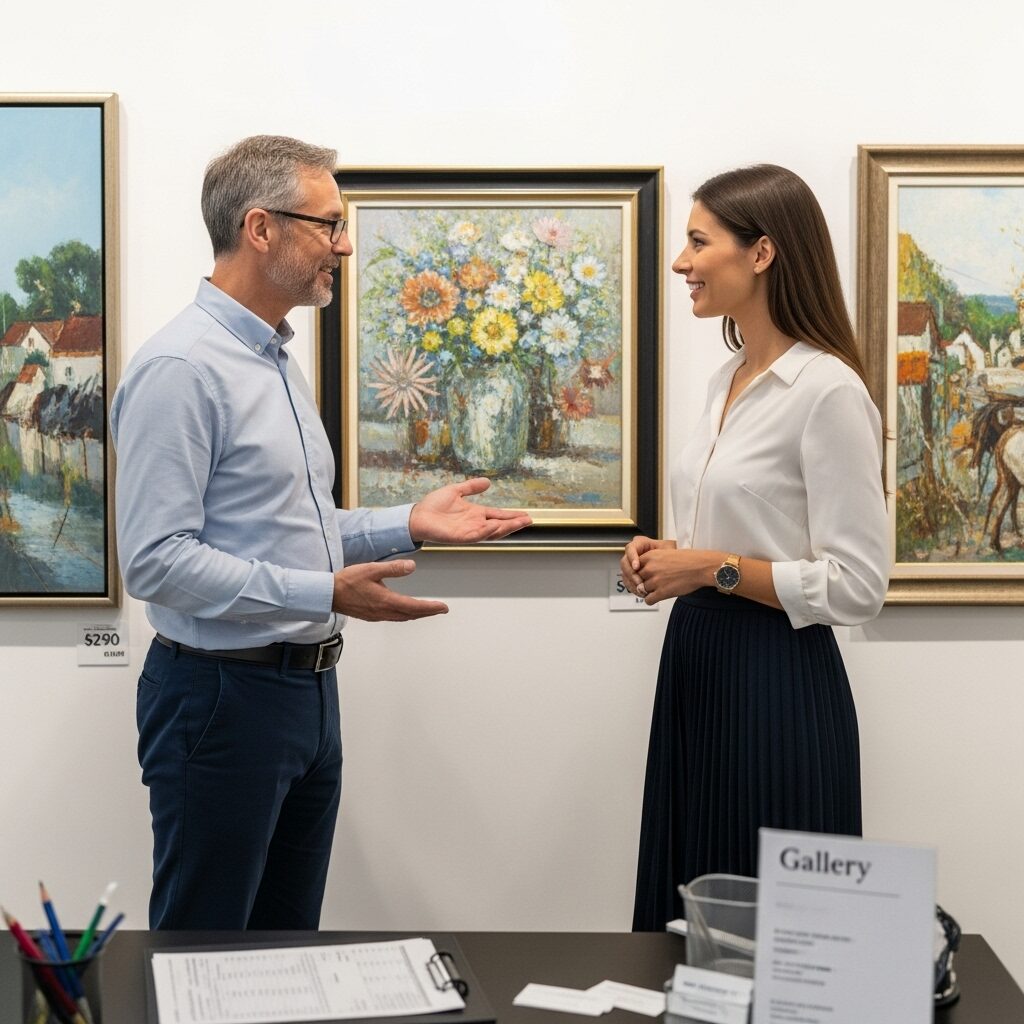
Sometimes galleries can’t reduce prices but can offer:
- Extended payment plans
- Inclusion of framing services
- Trade-in options for future purchases
What to Look for in Affordable Art
Not all budget-friendly art is created equal. Here’s how to identify quality pieces that will bring you joy for years to come:
Technical Quality
Even affordable art should demonstrate solid technical skills. Look for:
- Clean, purposeful brushstrokes
- Good composition and balance
- Quality materials (canvas, paper, paints)
- Proper finishing techniques
Emotional Connection
How to Appreciate Art goes beyond technical skills. The most important factor is whether the piece speaks to you personally. A $300 piece you love is better than a $3,000 piece that leaves you cold.
Artist’s Trajectory
Research the artist’s background, education, and career trajectory. Emerging artists with strong foundations often represent excellent value investments.
Managing Your Art Budget Effectively
Budget art purchases require careful financial planning beyond the artwork’s sticker price. Here’s how to budget comprehensively:
Total Cost Breakdown
Setting Realistic Budgets
Start with what you can comfortably afford without affecting your essential expenses. Many successful collectors begin with a monthly art budget of $50-$200, building their collections gradually over time.
Payment Plans and Financing
Many galleries offer payment plans, especially for pieces over $500. Don’t be afraid to ask about:
- Monthly payment options
- Layaway programs
- Credit card processing
- Artist financing arrangements
For those interested in the business side, How to Start an Art Business in 2025 offers insights into how artists and galleries structure their pricing and payment options.
Alternative Budget-Friendly Options
Sometimes galleries aren’t the only answer. Consider these alternatives:
Art Commissions
Art Commissions Guide shows how commissioning work directly from artists can be more affordable than gallery purchases, plus you get exactly what you want.
Print and Reproduction Sales
Many galleries sell high-quality prints of popular works at fraction of original prices. While not original, they offer access to beloved pieces at budget-friendly prices.
Group Exhibitions and Juried Shows
These events often feature lower prices due to competition and the desire to gain exposure.
Building Your Collection Over Time
Remember, art collecting on a budget is a marathon, not a sprint. Business Art Investment principles apply to personal collecting too – patience and strategy beat impulse purchases every time.
Start Small, Think Big
Begin with smaller pieces and less expensive mediums like:
- Works on paper
- Photography
- Prints and multiples
- Small paintings
Focus on Themes or Movements
Collecting around specific themes, techniques, or artistic movements creates cohesion and can be more affordable than random purchases.
Document Your Journey
Keep records of your purchases, including:
- Artist information
- Purchase date and price
- Gallery or source
- Condition reports
- Display photos
This documentation helps with insurance, resale value, and personal satisfaction.
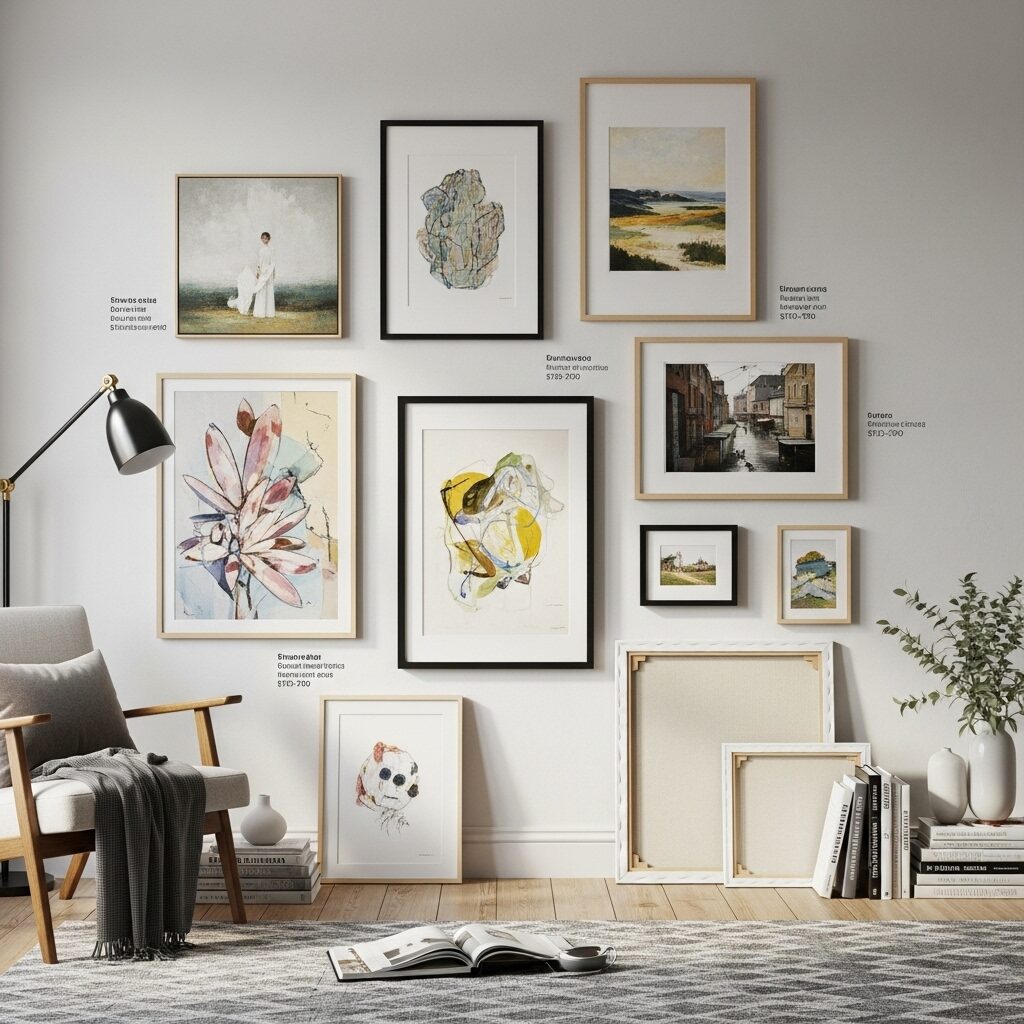
Making the Most of Your Purchases
Once you’ve found your perfect piece, consider Art for Interior Design principles to maximize its impact. Proper display and lighting can make a $200 piece look like a million dollars.
Understanding Essential Elements of Composition will also help you evaluate potential purchases and arrange your growing collection effectively.
Conclusion
Buying art on a budget at galleries isn’t just possible – it’s an exciting journey that can lead to a meaningful collection without financial stress. The key is understanding gallery dynamics, building relationships, timing your purchases strategically, and focusing on pieces that truly speak to you.
Remember, every major art collector started somewhere. Your first affordable purchase could be the beginning of a lifelong passion. Start with galleries that match your budget, be patient with the process, and trust your instincts. With these strategies, you’ll discover that affordable art can be just as beautiful, meaningful, and valuable as expensive pieces.
The art world is more accessible than ever, and galleries need collectors like you to thrive. So take that first step, visit a local gallery, and begin your journey into the wonderful world of art collecting – your budget will thank you, and your walls will never look the same.
Frequently Asked Questions
How much should I spend on art as a beginner? Start with 1-3% of your disposable income monthly. This allows you to build a collection gradually without financial stress.
Is buying art a good investment? While art can appreciate in value, buy pieces you love first. The enjoyment you get daily is more valuable than potential financial returns.
How do I negotiate art prices at galleries? Research comparable works first, ask about payment plans, and be respectful. Many galleries are willing to work with serious buyers.
When do art galleries have sales? End-of-exhibition periods, post-holidays (January-March), and summer months typically offer the best deals.
What should I look for when buying art? Focus on technical quality, emotional connection, and the artist’s background. Trust your instincts about what you love.
How do I authenticate art purchases? Ask for certificates of authenticity, research the artist’s background, and keep detailed purchase records.
How much does framing cost? Professional framing typically costs $50-$300 depending on size and materials. Budget for this additional expense.
Should I buy art directly from artists or galleries? Both have advantages. Galleries offer curation and expertise, while artists offer direct relationships and often lower prices.
Additional Resources
- Artsy – Online platform for discovering and buying art from galleries worldwide
- Saatchi Art – Extensive collection of affordable original art from emerging artists
- The Art Assignment (PBS) – Educational content about art appreciation and collecting
- Artfinder – Platform connecting collectors with independent artists
- Society6 – Affordable art prints and home decor from independent artists
- Local Arts Council Directory – Find galleries and art events in your area
- Appraisers Association of America – Professional art appraisal services

